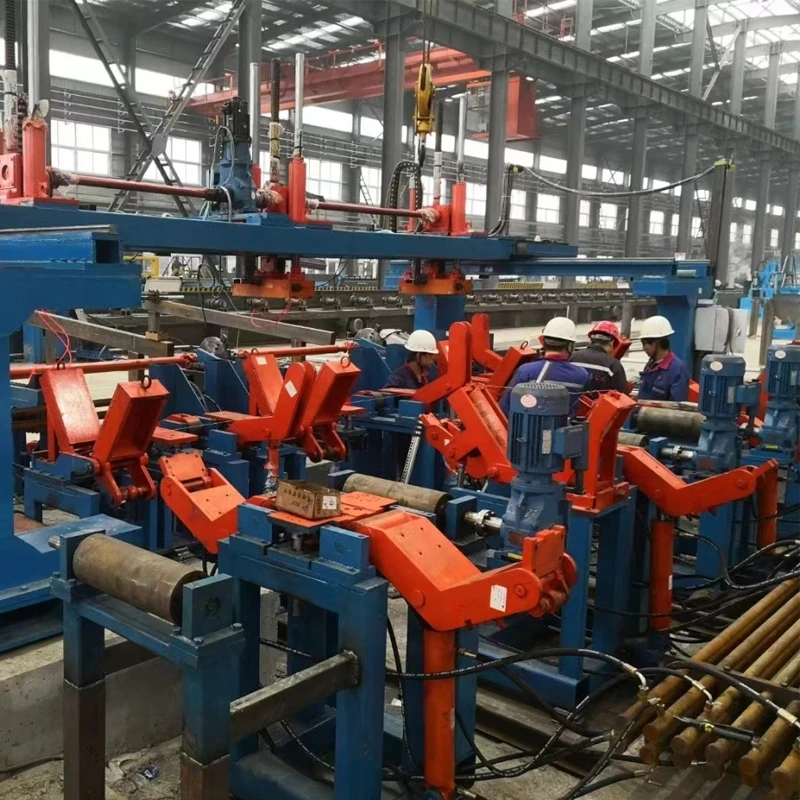High-Precision Sawing Machine for Efficient Material Cutting and Shaping
The Flying Saw Machine Revolutionizing Material Cutting
In the world of manufacturing and construction, efficiency and precision are paramount. The advent of advanced machinery has continuously transformed traditional methods, leading to improved productivity and reduced waste. Among these innovations, the flying saw machine stands out as a groundbreaking technology, specifically designed for high-speed and accurate cutting of various materials. This article delves into the workings, benefits, and applications of flying saw machines, highlighting their significant role in modern industries.
What is a Flying Saw Machine?
A flying saw machine is an automated cutting system that utilizes a rapidly moving saw blade to achieve precise cuts on different materials, including metal, plastic, wood, and composites. Unlike conventional saws, which typically have a stationary cutting mechanism, flying saw machines feature a dynamic design where the saw blade moves through the material, ensuring faster cutting speeds and improved accuracy. This technology is particularly advantageous in settings where large volumes of materials need to be processed quickly and efficiently.
How Does It Work?
The operation of a flying saw machine involves several key components working in tandem. At its core, the system incorporates a high-speed saw blade that can rotate at impressive velocities. The saw is equipped with advanced motion control technology, enabling it to synchronize its cutting action with the movement of the material being processed. As the material passes through the machine, the flying saw quickly descends to make precise cuts, often creating clean edges and minimizing the need for additional finishing processes.
Many flying saw machines are outfitted with sensors and computer systems that monitor the cutting process in real-time. This integration allows for adjustments in speed and pressure, further enhancing the overall precision of cuts. Moreover, modern flying saw machines can be programmed to handle various cutting patterns, making them versatile tools for a wide range of applications.
Benefits of Flying Saw Machines
1. Increased Efficiency One of the primary advantages of flying saw machines is their ability to operate at high speeds, significantly reducing cutting times. This efficiency translates to lower production times and higher output, which is essential for industries operating under tight deadlines.
2. Precision Cutting The automated nature of flying saw machines ensures consistent and accurate cuts. This precision reduces material wastage and minimizes the need for additional post-processing work, contributing to cost savings in manufacturing.
flying saw machine

3. Versatility Flying saw machines can adapt to cutting different materials and shapes, making them suitable for a variety of industries. Whether it's cutting metal bars, plastic profiles, or wooden beams, this technology can handle diverse workloads.
4. Reduced Labor Costs Automation reduces the reliance on manual labor, which not only cuts costs but also mitigates the risk of human error. With fewer operators needed, companies can allocate their workforce more efficiently across different tasks.
5. Improved Safety Modern flying saw machines come equipped with various safety features, such as automatic shut-off systems and protective enclosures, ensuring a safer working environment compared to traditional cutting methods.
Applications in Industries
Flying saw machines find applications across multiple sectors, including
- Construction They are widely used for cutting structural components like beams, channels, and pipes, which require precision and consistency for structural integrity. - Manufacturing In factories that produce metal and plastic parts, flying saw machines streamline the cutting process, enhancing the overall efficiency of production lines. - Aerospace and Automotive The aerospace and automotive industries rely on precise cuts for parts fabrication, making flying saw machines an invaluable tool for quality control and production scalability.
- Furniture and Construction Materials In the woodworking industry, flying saw machines efficiently cut various wood products, ensuring high-quality finishes and reducing waste.
Conclusion
The flying saw machine represents a significant leap forward in cutting technology, marrying speed and precision to meet the demands of modern manufacturing and construction. As industries continue to prioritize efficiency and sustainability, the adoption of advanced cutting solutions like flying saw machines will likely expand, paving the way for smarter, more productive operations. As we look to the future, it is clear that innovations such as these will play a crucial role in shaping the landscape of manufacturing, ultimately driving progress across various sectors.
-
High Frequency Straight Seam Welded Pipe Production Line-BzZhou Xinghua Machinery Equipment Manufacturing Co., LTD.|Precision Welding, High EfficiencyNewsJul.30,2025
-
High Frequency Straight Seam Welded Pipe Production Line|BzZhou Xinghua|Precision Welding&EfficiencyNewsJul.30,2025
-
High Frequency Straight Seam Welded Pipe Production Line - BzZhou Xinghua|Precision Engineering&EfficiencyNewsJul.30,2025
-
High-Frequency Straight Seam Welded Pipe Production Line-BzZhou Xinghua Machinery Equipment Manufacturing Co., LTD.NewsJul.30,2025
-
High-Frequency Straight Seam Welded Pipe Production Line-BzZhou Xinghua Machinery Equipment Manufacturing Co., LTD.|Precision Manufacturing, High EfficiencyNewsJul.30,2025
-
High Frequency Straight Seam Welded Pipe Production Line-BzZhou Xinghua Machinery Equipment Manufacturing Co., LTD.|Precision Steel Pipe Manufacturing&Industrial EfficiencyNewsJul.29,2025


